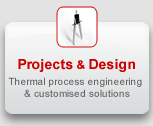Parallel resistance heating cables that will reduce their power output as temperatures rise but do not have the high in-rush currents associated with self-regulating heating cables.
These cables are capable of delivering high watt per foot heat outputs.




Thank you for your enquiry below. Our heat tracing specialist will be in contact with you soon...
Good day. Please quote on heating wires for a freezer room (-30 deg.C)
Heating wires to...